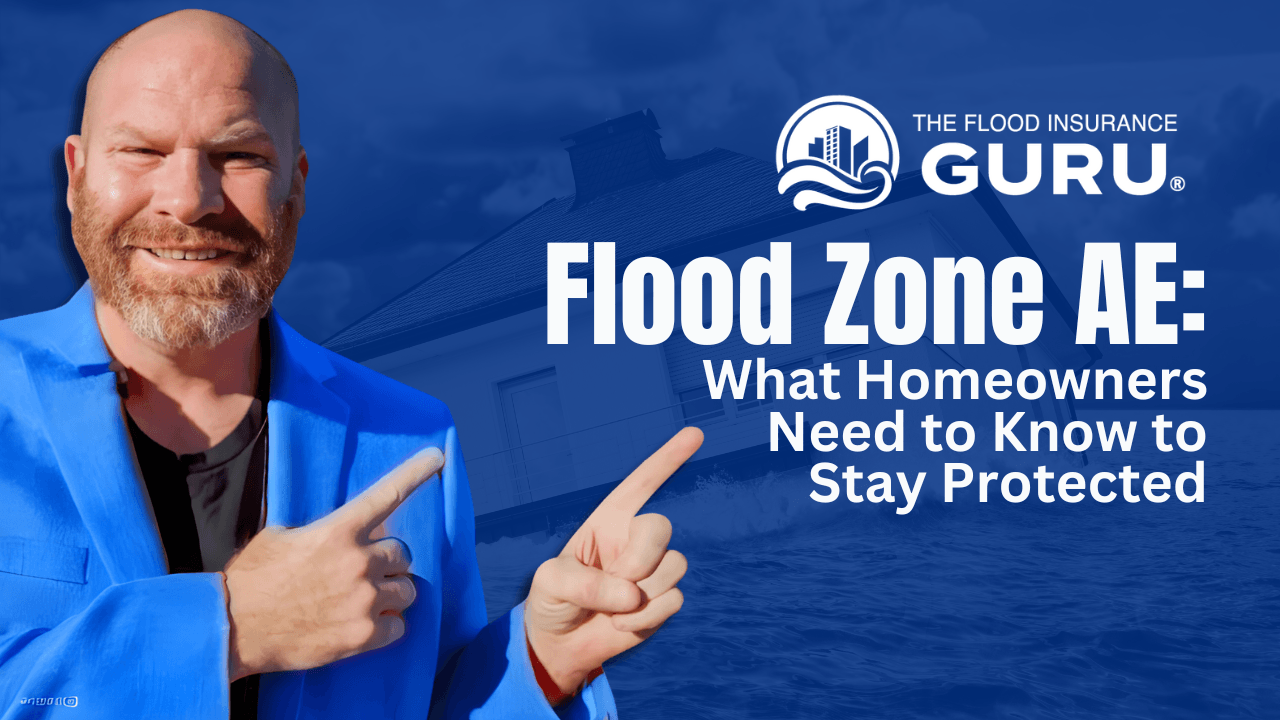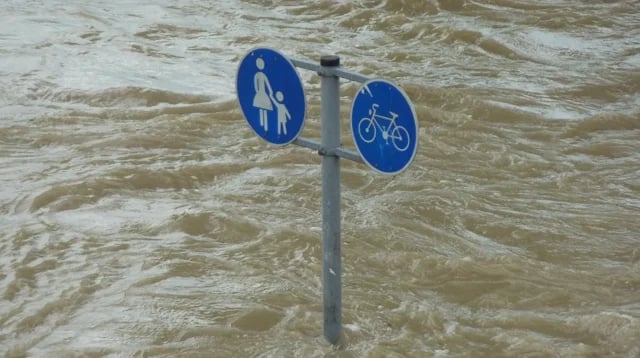Flood Zone AE: What Homeowners Need to Know to Stay Protected
February 7th, 2024
3 min read
By Chris Greene

Understanding Flood Zone AE: Key Facts Every Homeowner Should Know
One of the biggest things that really impacted flood insurance was flood zones. Aside from being a form of measurement of how the property is going to flood, this is also a big consideration when it comes to flood insurance but not anymore.
In this blog, we want to talk about one of the most common flood zones you'll see in flood insurance rate maps (FIRMs), the flood zone AE and discuss the 4 things you need to know about this zone.
Flood Zones
Flooding is one of the biggest and most common natural disasters that occur in the United States. It's estimated that even just an inch of water can cause around $25,000 in property damage.
One of the key things that can tell your risk of flooding and your property's chance of flooding is its flood zone. Historically, with the National Flood Insurance Program (NFIP), these flood zones are one of the bases for assessing your flood insurance premiums.
However, since we moved into a new Risk Rating 2.0 program, flood zones have become more of a regulatory measurement. This simply means that flood zones are only used now to see whether or not you're required to carry a flood policy with your property.
Flood zone AE is one of the common high-risk flood zones in the United States. In order to understand this high-risk zone, we will give you four things that you need to know by answering the following questions:
- Is Flood Zone AE in the 100-Year Floodplain?
- Is flood zone AE in a special flood hazard area (SFHA)?
- Is flood insurance required in Flood Zone AE?
- How does Flood Zone AE impact flood insurance rates?
So, let's answer these questions, but first, let's determine...
What is Flood Zone AE?
Flood zone AE is also known as a special flood hazard area since this is generally a zone where flood risks are very high and flooding can happen once every 100 years. Flood zone AE also has its base flood elevation determined through flood maps.
This is why it's commonly known as well as the 100-year flood zone. This is strictly based on research on probability however this doesn't really reflect how disasters work so it still differs. The flood zone is also known to have a 1% chance of flooding per year.

Is Flood Zone AE in the 100-Year Floodplain?
Being in the 100-year flood area or floodplain, Flood Zone AE presents around a 26% chance of flooding during a 30-year mortgage. This generally entails the risk of flooding on the property during that period. Generally, you will see properties in flood zone AE are close to a body of water.
Is Flood Zone AE in SFHA?
With the previous item answered, this easily puts Flood Zone AE in the special flood hazard areas (SFHA).
Special Flood Hazard Areas (SFHA) generally are areas that can experience a different types of floods. The Federal Emergency Management Agency (FEMA) would also qualify a flood zone designation as being in the SFHA if it experiences special floods, mudflows, or floods that are due to erosion hazards.
Is Flood Insurance Required?
Due to the flood zone being a high-risk area, properties that are mapped into flood zone AE are generally required to carry flood insurance.
This means that if your home or commercial building is sitting on flood zone AE, your mortgage will require you to get flood coverage for the property against flood damage. This is to make sure that the property's value, structure, and integrity is protected and preserved in the event of a flood disaster.
These zones are determined by the flood insurance rate map (FIRM) to see if the structures of the properties can keep up with the possible flood risk in the area. It's important that the flood map uses the data on the chance of flooding in the area, the base flood elevation of the community or the property, and as mentioned before the probability of a flood in the event that there's heavy rainfall or somewhere along those lines.
So, when it comes to Flood Zone AE, you can expect that a mandatory flood insurance purchase will be expected for property owners who are mapped into this high-risk flood area. This may come either from your mortgage lender or through FEMA itself.
Flood Zone AE & Premium Rates
To answer the question: How does flood zone AE impact flood insurance rates, we will have to look at both the past and the current state of the flood insurance industry.
Traditionally, with the NFIP and FEMA, being in a flood zone AE has a direct impact to flood insurance costs. This is because, historically, federal flood insurance would use flood zones as a basis for flood insurance premiums which means that generally, some properties with minimal flood hazard will see cheaper flood insurance rates compared to flood zone AE.
However, things have changed with NFIP's Risk Rating 2.0 which only uses these zones as a measurement of whether or not a property should have flood insurance. So, flood zones no longer have an impact on rates. The same can be said for the private flood insurance market.
It's important to remember, however, that there are other things that your flood insurance policy costs will be based on such as distance to water, type of flood, frequency of flooding, the elevation of the property, and many more.
So, those are the four things you should know about flood zone AE in the current flood insurance market. If you have questions regarding flood zones, flood insurance, or anything flood-related, click below to access our Flood Learning Center to get your answers.
Ready to start simplifying your flood insurance? Download the flood zone AE guide.



